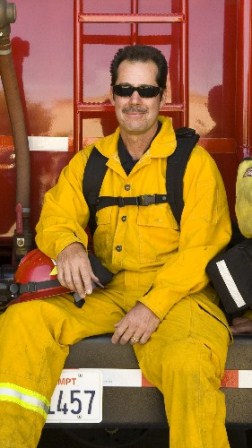A non-profit organization called The Forest Foundation has released a study that claims the greenhouse gases released by the 4 large wildland fires that they studied is similar to the gases released by 7 million cars on the road for 1 year.
The Foundation says they studied these 4 California fires:
- The Angora Fire, which burned more than 3,100 acres near South Lake Tahoe in June and July of 2007.
- The Fountain Fire, which destroyed nearly 60,000 acres east of Redding in August 1992.
- The Star Fire, which burned more than 16,000 acres in September 2001 in the Tahoe and Eldorado National Forests.
- The Moonlight Fire, which burned more than 65,000 acres in September 2007 in and around the Plumas National Forest in the northern Sierra Nevada.
I have never heard of this organization, and have no idea of the credibility of them or the study. But it is certain that information like this, credible or not, is going to have an increasing effect on the management of public and private land.
So, should land management agencies redouble their efforts at preventing and suppressing wildland fires? Or, should there be a greater emphasis on prescribed fire or fuel reduction? Of course, prescribed fire will put greenhouse gases into the air, but will it be less than when the vegetation burns in an unplanned ignition? You’re damned if you do, and damned if you don’t.
Fire Management Plans and Prescribed Fire Plans are going to become more complex, time consuming, and expensive to develop.
Update, March 21, 2008:
I have found out more about the origin this “study”. According to an article written by Thomas M. Bonnicksen in the Sacramento Union published yesterday March 20, Bonnicksen claims that he “authored (it) for the Forest Foundation”.
Bonnicksen is a “Professor Emeritus” at Texas A&M University. And, according to a Greenpeace web site called Exxon Secrets, he is associated with National Center for Public Policy Research.
In August of 2000 an article he wrote called “The Lesson of Los Alamos” was published on the Heartland Institute web site in which he was extremely critical of the National Park Service (NPS) and prescribed burning in general. In the article, Bonnicksen is not encumbered by facts in reaching his conclusions.
It is true that mistakes were made by the NPS on the prescribed fire at Bandelier National Monument that led to the Cerro Grande fire, and also in 1988 in Yellowstone National Park, but Bonnicksen is only correct in some of his analysis. For example, many of the fires that burned into Yellowstone in 1988 were human-caused and started outside the park.
According to Wikipedia:
Almost 250 different fires started in Yellowstone and the surrounding National Forests between June and August. Seven of them were responsible for 95% of the total burned area.
Yet Bonnicksen said:
Park staff did the same thing in Yellowstone in 1988, when they allowed a natural fire to burn until it became impossible to control. When it was over, the fire had charred nearly one-half of our oldest national park.
The Chapparal Institute has an exhaustive analysis and critique of some of Bonnicksen’s attention-grabbing writings. An excerpt:
When someone spends so much effort to promote an idea, especially with such inflammatory language, it is often helpful to consider their motivation and connections. Due to his economic and political interests, it is difficult to view Dr. Bonnicksen as the objective observer and expert that he portrays himself.Dr. Bonnicksen is on the advisory board for the following organizations:
The Forest Foundation, a non-profit organization supported by the California Forest Products Commission. “The Forest Foundation strives to foster public understanding of the role forests play in the environmental and economic health of the state and the necessity of managing a portion of California’s private and public forests to provide wood products for a growing population” (from their website).
According to public documents, Dr. Bonnicksen has been paid by the Forest Foundation to write opinion pieces in newspapers and to give presentations to promote land use policies favored by the logging industry. He also offers consulting services regarding timber and vegetation management. Nothing wrong with any of this of course, but it should be taken into consideration when measuring an individual’s objectivity.

